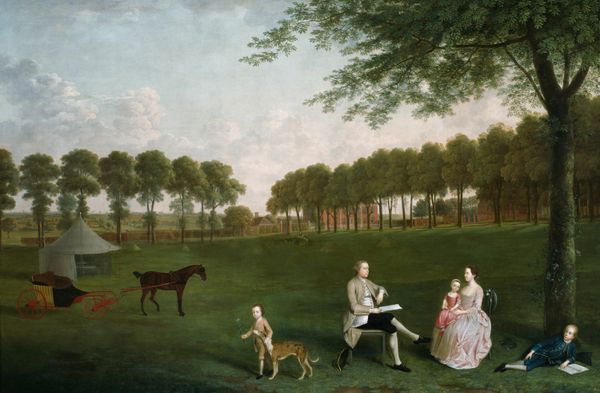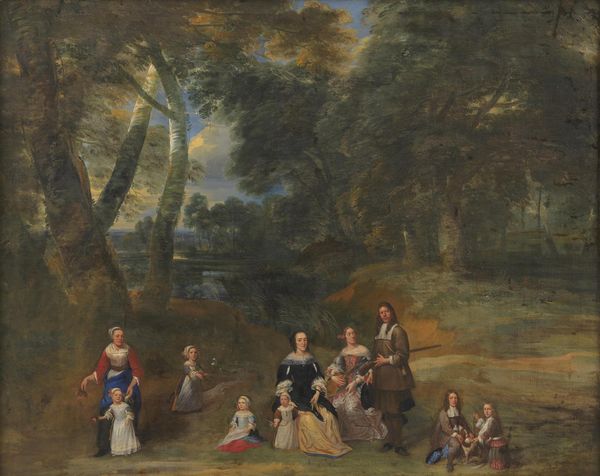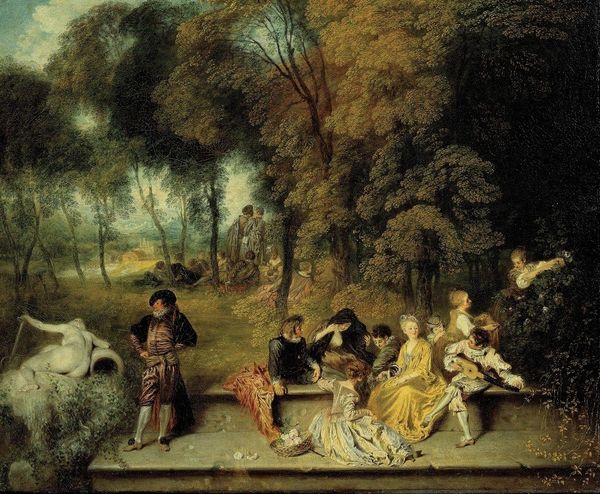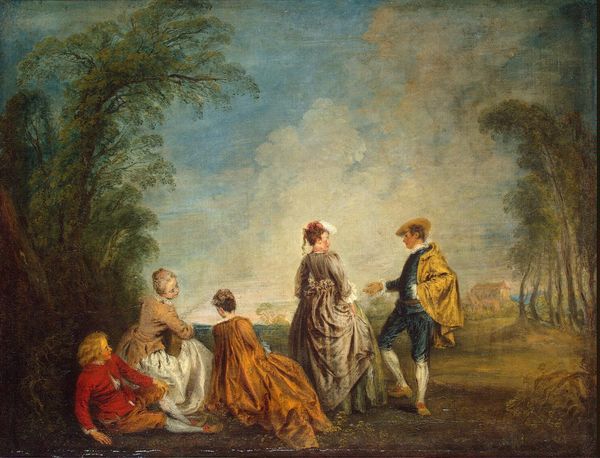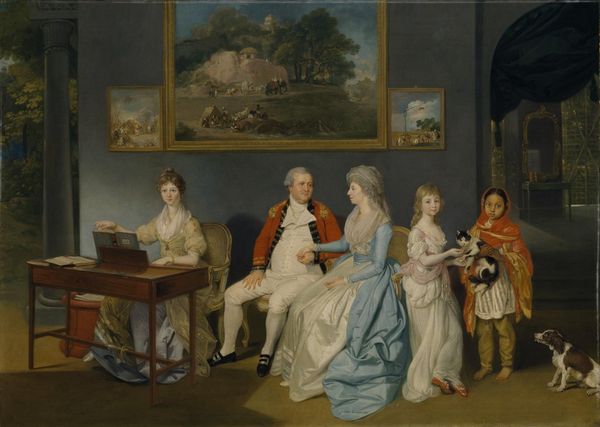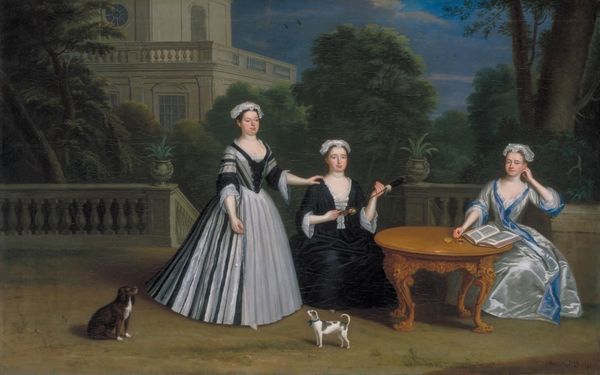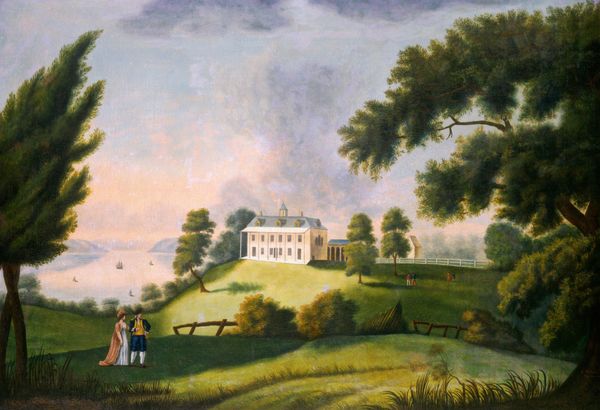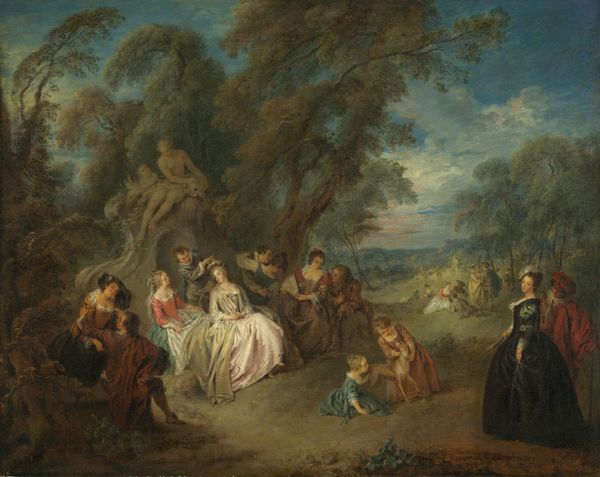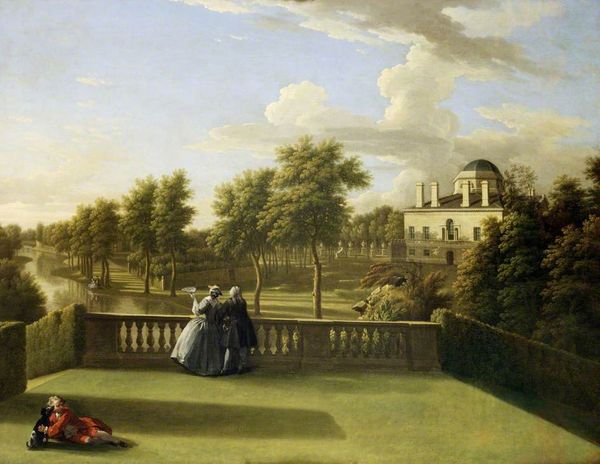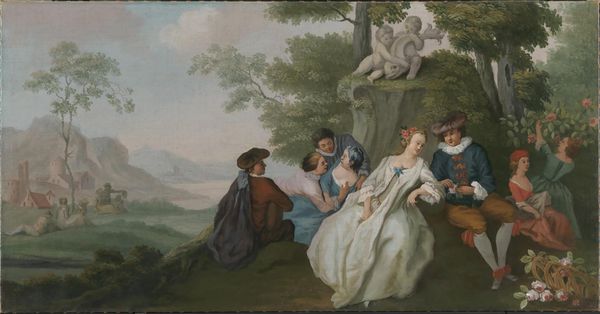
Members of the Maynard Family in the Park at Waltons c. 1755 - 1762
0:00
0:00
painting, oil-paint
#
gouache
#
painting
#
oil-paint
#
landscape
#
group-portraits
#
genre-painting
#
rococo
Dimensions: overall: 138.5 x 195.6 cm (54 1/2 x 77 in.) framed: 158.8 x 217.2 x 7 cm (62 1/2 x 85 1/2 x 2 3/4 in.)
Copyright: National Gallery of Art: CC0 1.0
Curator: This is Arthur Devis’ “Members of the Maynard Family in the Park at Waltons,” painted around 1755-1762, rendered in oil on canvas. It is often read as an idealized group portrait. Editor: It strikes me as quite reserved, despite the pastoral setting. Everyone seems carefully posed, almost like figurines placed within a dollhouse landscape. Curator: The composition is incredibly telling, isn't it? Consider the family's positioning in relation to the house. The placement speaks volumes about landed gentry asserting dominance through portraiture and its intersection with property ownership. The leisurely depiction, even the girl collecting flowers, it's all designed to legitimize and naturalize the family's elevated societal standing. Editor: The image is also ripe with traditional imagery of femininity. The daughter with her flowers; the mother playing a stringed instrument—these symbols paint a portrait of virtue and cultivation. Consider too, the subtle presence of the estate itself in the background, evoking power and control in a very particular and culturally recognizable language. Curator: Absolutely. What fascinates me is the Rococo aesthetic’s inherent ties to class and privilege. The elaborate costumes, the contrived elegance; the family aren't presented as naturalistic. There’s an aspirational element on display that reflects societal trends of the time, perhaps revealing the influence of nouveau riche culture on the gentry. Editor: But it feels less flamboyant than, say, a Fragonard. There’s something distinctly English about the muted tones and slightly stiff postures that create a certain type of symbolic presentation of wealth, tradition, and lineage that’s less explicit than many Continental counterparts. Curator: Indeed. It offers an interesting insight into the socio-political narratives that were then becoming cemented. Editor: Seeing through these coded representations is a skill that art can uniquely hone. Thanks to paintings such as these, viewers are handed clues to read how society perpetuates power through image. Curator: Exactly; even if this representation looks subtle at first. Editor: Let us step back and admire the skill of the artist for now.
Comments
No comments
Be the first to comment and join the conversation on the ultimate creative platform.
